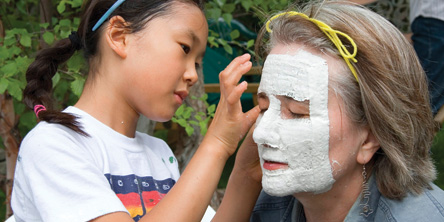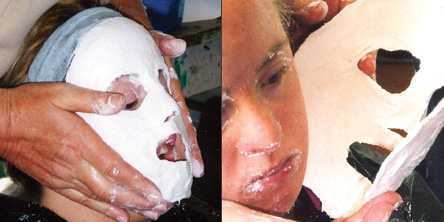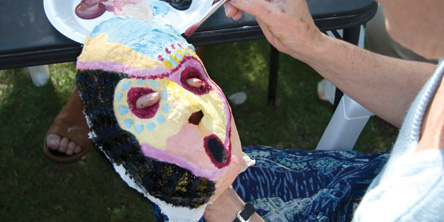Project Description
Working as a volunteer, I facilitated mask making sessions with groups of individuals from many walks of life in England, in Minnesota, USA, New Zealand and Australia. Some came from communities in which I was currently involved, along with friends and family, while many others were drawn from what might be regarded as fringe groupings — individuals who were resident in more structured environments such as juvenile prisons, nursing homes, clubs for at risk youth, alternative schools, halfway houses for recovering alcoholics and centers for the mentally disabled to name a few.
Over a period of a year and a half I worked with 24 groups, and over 165 individuals. I have been able to include most of the participants in the final exhibit. (Apologies to those I could not).
Dialogue and feedback were an important part of the mask making process. The intention was set within a circle for open and honest speaking, for deep listening and non-judgment. Where it was possible, questions were asked prior to making the mask: "How do you present yourself to the outside world. How do others see you?"
Then, over a period of four hours, the participants worked in pairs. Each applied Vaseline and then strips of moistened Plaster of Paris gauze, to the contours of the others face. Choices were made by the wearer as to whether the eyes, mouth, nose were to be covered. In this way, a replica of the face was formed, which when dried, created the basis for a new face.
For some, who had a history of abuse, this level of intimacy was difficult but everyone was committed to the process. When the mask was dry, and using an intuitive approach with no pre-planning, each person painted color and applied decorative materials to the surface of the mask, creating their own design.
After it was complete, the mask of each individual was worn by another member of the group and the owner asked "What do you see when you look at your mask?" Sometimes the mask was surprising to the creator, and helped him/her to define more clearly what parts of themselves had become more visible to others. Even the most intellectually disabled, were able to demonstrate, without words, who they were through their mask. This was not a project requiring great artistic talent and no accolades were encouraged. The mask was perfect however it manifested.
The persons face and their mask were then photographed using a customized, black velvet covered board with a cut out for the head and another alongside for their mask, resulting in an image of both "outer" and "inner" face emerging out of black. These multiple duo images were processed and composited within Photoshop to fit appropriate sized panels that were ultimately merged together into a 6 x 20 foot exhibit panel — the final product.
The masks have remained in the ownership of each participant.




© 2007 Barbara Cummard. All reproduction prohibited.